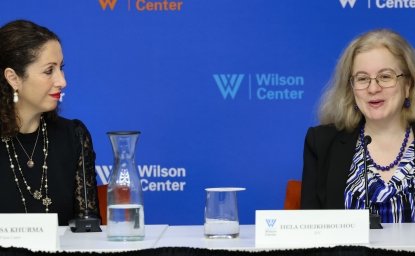NEW YORK — Tall and tan, blond and flashy, the model Gisele Bündchen has been for most of the world the seductive image of today’s Brazilian women, strutting down fashion runways in Paris, Milan and New York, while her face graces scores of magazine covers.
Now there’s a new image, a new face.
Brazilians call her simply Dilma. Dilma Rousseff, the first female president of Brazil, declared that this is “the century of women” in her speech opening the U.N. General Assembly in September. “I speak to you with a feminine voice,” she said. “It’s the voice of democracy, of equality.”
Much has been made of Ms. Rousseff, a onetime Marxist militant, technocrat, economist and handpicked successor to the popular Luiz Inácio Lula da Silva. Many in and outside Brazil doubted she could emerge from Mr. da Silva’s shadow or prove herself at the helm of the world’s seventh-largest economy at a time of global crisis.
In just 11 months in the presidential palace in Brasília, she has put her imprint on the country and on the international scene: the cover of Newsweek; the top 10 on Forbes’s list of the world’s most powerful women; unusual praise from The Economist (“She can easily stand on her own two feet”).
But how far have Brazilian women come?
They’ve moved ahead in education and health, according to new studies, and in the professions and technical fields. But their economic and political power has grown more slowly, and they lag in managerial and senior positions.
Ms. Rousseff has appointed women to high-profile positions like chief of staff, planning minister and minister of institutional relations. Altogether, women make up a third of her cabinet, and her unabashed promotion of women is said to have injected a new tone in the presidential office, in government and in the private sector.
In the sixth annual Global Gender Gap study by the World Economic Forum, released Nov. 1, Brazil received a middling rank among the 135 countries surveyed. By contrast, Argentina, where President Cristina Fernández de Kirchner won a second term in a landslide in October despite talk that she could not make it after the death of her husband, former President Néstor Kirchner, placed 28 to Brazil’s 82, thanks largely to bigger female participation in Argentine politics.
“Brazil has made advances on women on closing health and education gaps,” said Saadia Zahidi, senior director of the World Economic Forum and co-author of the Global Gender Gap study. But the survey revealed continuing gaps in the labor force, in wages, at the uppermost levels of business and in the rate of women’s unemployment, which is twice that of men.
In the Executive Opinion Survey conducted by the World Economic Forum, executives rated Brazilian women’s ability to rise to positions of senior leadership in business at 4.06 on a scale of 1 to 7. And women hold only 9 percent of parliamentary positions, “well below the world average,” Ms. Zahidi said.
On another front, new data from the Center for Work-Life Policy in New York show that educated women in Brazil, Russia, India and China — the emergent BRIC markets — are ambitious and aspirational. Women represent 60 percent of Brazil’s college graduates, and 80 percent of them consider themselves “very ambitious,” compared with 36 percent in the United States, according to Sylvia Ann Hewlett, an economist and founding president of the Center for Work-Life Policy.
“Turbo-charged ambition is paying off,” Ms. Hewlett wrote in a recent article in Time. “In Brazil, 14 percent of the C.E.O.’s of large companies are female.” In the United States, she said, the number of women who head Fortune 500 companies is less than 5 percent.
“A leader like Dilma Rousseff can have an influence practically, by appointing women to cabinet posts in the way that she has done, but also by contributing to an imaginative reset of what women can be, and the authority and influence women can and should wield,” said Liza Mundy, a fellow at the New America Foundation in Washington and author of “Michelle,” a biography of Michelle Obama. “Over time, having women in these positions is bound to change women’s self-image and the ideas people have about women’s place and role in society.”
Laura Liswood calls this “the power of the mirror.” Ms. Liswood, the secretary general of the Council of Women World Leaders, a policy program of the Woodrow Wilson International Center for Scholars, said that women in high positions could have high positive impact on women generally.
The Dilma Effect has converted even some who resisted Ms. Rousseff’s 2010 election. “This year is remarkable for Brazilian women, a year when a woman won the presidency,” said one convert, Anna Maria Tornaghi, an international communications and marketing consultant based in Rio de Janeiro.
Besides the women in the cabinet — “uncommon in past governments” — Ms. Tornaghi noted that several women hold strategic positions in corporations, like Chieko Aoki, the head of Blue Tree, one of the largest hotel chains in Brazil; Maria Cláudia Oliveira Amaro, president of the board of TAM, the country’s leading airline; Maria Silvia Bastos Marques, the first chairwoman of C.S.N., the national steel company; and Vera Gaensly Cordeiro, a medical and social entrepreneur and founder of the worldwide Child Health Association.
“Dilma is the culmination,” Ms. Tornaghi said. “It’s a quiet revolution, which is growing by leaps and bounds.”
This article was originally published in the New York Times on November 15, 2011.
Source: http://www.nytimes.com/2011/11/16/world/americas/16iht-letter16.html?scp=2&sq=Laura%20Liswood&st=cse



